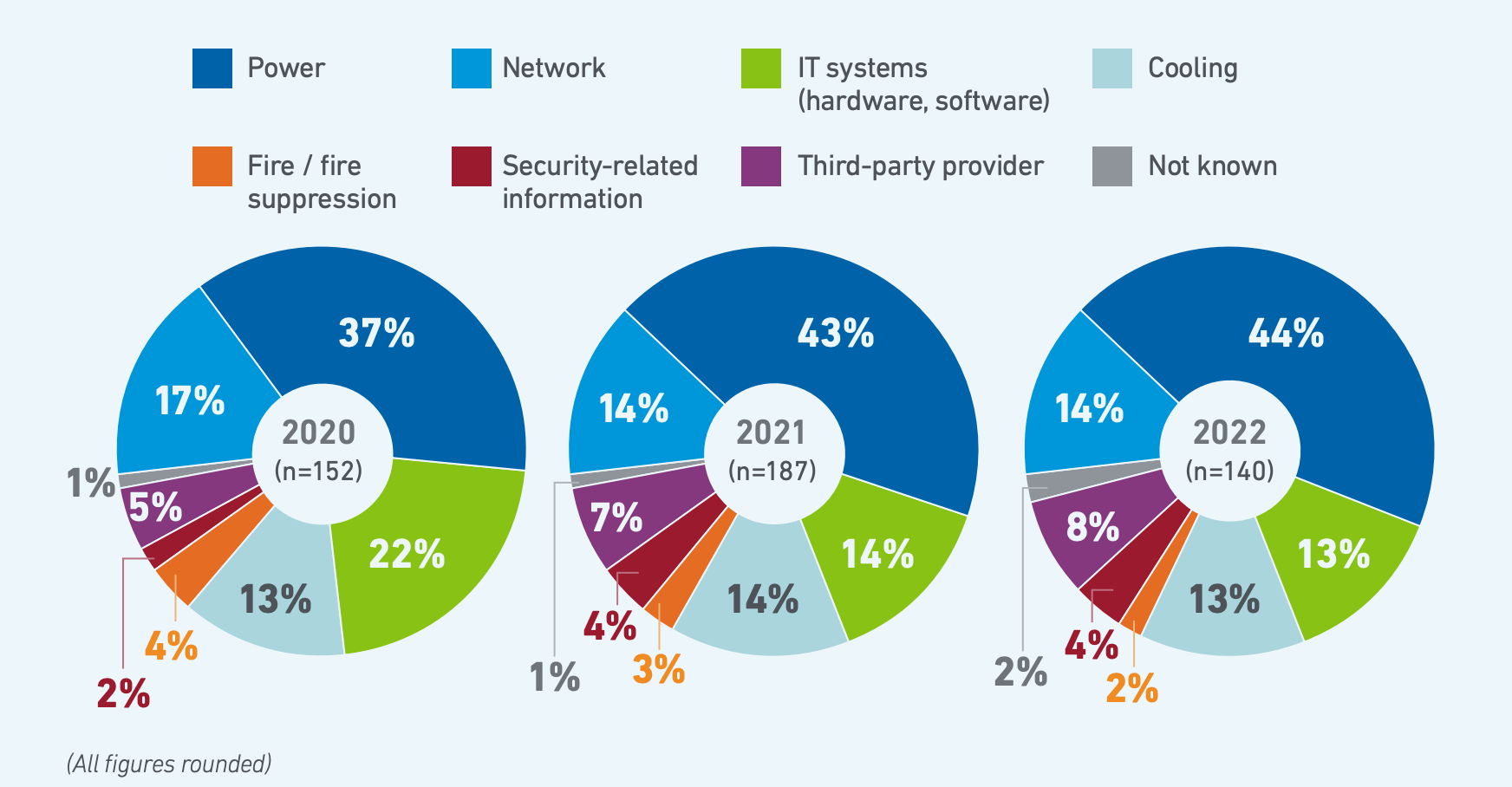


|
||
|
||

The Uptime Institute (UI) is an IT industry research firm best known for certifying that data centers meet industry standards. UI issues an annual report that analyzes the cause of data center outages. The causes for data center outages are relevant to the broadband industry because the same kinds of issues shut down switching hubs and Network Operations Centers.
The following table shows the underlying cause of the network outages in 2022 that were severe enough to be publicly reported.
| Cause | Publicly Reported |
|---|---|
| Cabling | 9% |
| Capacity Issues | 6% |
| Cooling | 6% |
| Fiber Cut | 17% |
| Fire | 7% |
| IT Software Issues | 18% |
| Network Connectivity | 12% |
| Power | 9% |
| Cyberattack | 11% |
| Third Party | 7% |
UI cautions that it is somewhat skeptical of the stated reasons for outages since data center owners are notorious for lack of transparency. The report says that a large portion of outages are caused by human error and management failures. An increasing number of major outages are caused by cloud, collocation, ISP, or hosting companies.
Of growing concern are cyberattacks and ransomware, which accounted for 11% of major outages. These outages are often lengthy and can lead to contamination and loss of integrity of stored data. UI says that one of the reasons for increased security breaches is an increasing reliance on industry-standard operating systems and remote monitoring, which both create homogeneous systems that are easier for hackers to understand and breach.
6% of known outages in 2022 were ranked by UI as severe, meaning there was a major and damaging disruption of services, including large financial losses, compliance breaches, customer losses, and safety issues. Another 8% were considered to be serious, meaning the outage was still damaging.
The number of overall major outages is about the same as in 2019 when the annual reports were first generated—despite the huge amounts of resources being spent to improve technology, software, and physical redundancy.
One interesting warning from the report is that UI cautions businesses not to rely on Service Level Agreements (SLAs) that promise 99.9%+ reliability. Many data center providers fall short of that level of performance, which is prossibly the reason for the lack of transparency.
Following are the major outages in 2022 by sector. Of particular concern to readers of this blog is telecommunications, which has seen a huge increase in the percentage of total outages since 2019.
| Cloud / Internet Giant | 19% |
| Digital Services | 30% |
| Financial Services | 7% |
| Government | 7% |
| Telecommunications | 32% |
| Transportation | 5% |
Sponsored byIPv4.Global

Sponsored byCSC

Sponsored byVerisign

Sponsored byRadix

Sponsored byVerisign

Sponsored byWhoisXML API

Sponsored byDNIB.com
